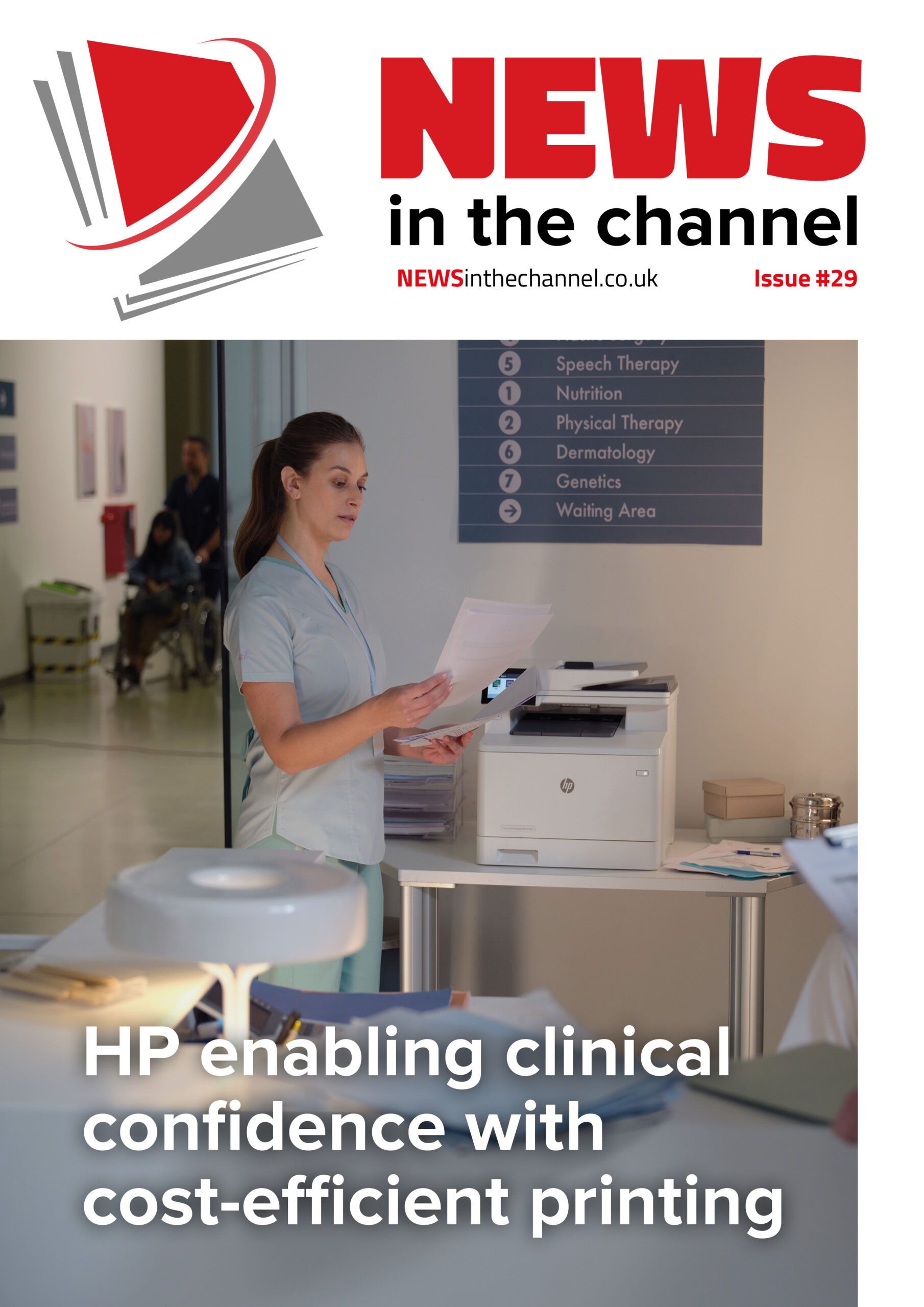Healthcare organisations are digitalising their systems and, increasingly, the healthcare services they deliver, which means there are opportunities for resellers to capitalise on – if they can get into the sector.
Digitalisation has been happening across all sectors in the UK for years now, but some have been faster to adopt it than others. One of the slower to adopt has been healthcare organisations – government figures from 2022 showed that only 20% of NHS healthcare organisations are digitally mature – but this is changing, and many are now in the process of digitalising.
“The COVID-19 pandemic highlighted the importance of digital solutions in healthcare delivery, leading to an increased focus on digitisation across Europe,” says Alex Ryan, director, EMEA Healthcare Business Development at Hyland.
“Healthcare organisations are embracing technologies like electronic health/patient records (EHR/EPRs), telemedicine, remote patient monitoring and artificial intelligence (AI)-assisted diagnostics. Digitisation offers many benefits, including improved patient care, increased efficiency, reduced costs and enhanced data analysis for better decision-making.
“On a larger scale, European governments are investing in digital health infrastructure and implementing policies to encourage the adoption of digital technologies. The goal is to create a more interconnected and patient-centric healthcare system while leveraging technology’s potential to drive better health outcomes.”
Achieving digitalisation goals
Alex adds that resellers can play a vital role in helping healthcare providers achieve their digitisation goals. “Firstly, these companies can offer comprehensive EHR systems that enable seamless data management and interoperability between different healthcare facilities,” he says. “They can also provide advanced telemedicine solutions, facilitating remote consultations and improved access to care.
“Furthermore, IT companies can assist in implementing robust cybersecurity measures to protect sensitive patient information. They can offer data analytics tools that allow healthcare providers to extract meaningful insights from vast amounts of data, enhancing decision-making and resource allocation.
“Ultimately, by offering tailored technologies and expertise, IT companies can accelerate the digital transformation journey of many healthcare providers.
“Additionally, there’s a growing focus on cybersecurity to protect patient data and ensure privacy. Overall, these trends reflect a concerted effort to enhance efficiency, accessibility and quality of healthcare services through digital transformation.
“Price is a significant factor on these, especially given the funding mechanisms in the UK.”
Accessing the market
However, it can be difficult for resellers to access the healthcare markets in Europe, Alex notes. “The complexity lies in navigating the diverse regulatory landscape, varying healthcare systems and market dynamics across different countries in Europe, the Middle East and Africa,” he says.
“Each country has its own set of regulations, data privacy laws and interoperability requirements that IT healthcare providers must adhere to. Moreover, understanding local market needs cultural nuances; building relationships with local stakeholders can be time consuming and resource intensive.
“However, with proper research, strategic partnerships and a tailored approach to meet regional requirements, IT healthcare providers can successfully penetrate and thrive in the EMEA healthcare market.”
Neil Cornish, ecosystems business development manager, TD SYNNEX, agrees that getting into the healthcare sector can be a challenge. “It can take time and you need to have something genuinely new that will make a significant difference to healthcare organisations, either in terms of significant efficiency enhancements and cost reduction, or healthcare outcomes,” he says.
“At TD SYNNEX, we have been working with IBM to develop an ecosystem that brings together innovators and ISVs with ideas, and partners that have access to healthcare markets and are looking for new solutions that will enable them to have fresh and meaningful conversations with hospitals and trusts. As well as IT industry partners, we’ve been engaging with the NHS Clinical Entrepreneur Programme and getting their members involved.
“We’ve had some significant successes already and have a regular cycle of activity throughout the year that is designed to accelerate time to market for innovative solutions from healthcare start-ups and increase the range of options available to our partner community.
“TD SYNNEX provides marketing and business support and runs face to face events to help partners understand opportunities and even explore how they can attract investment. In this way, we are helping partners to find new ways to deliver value and create opportunities in healthcare, while building a pipeline for software applications for technologies such as IBM Watson that have the power to deliver transformational outcomes for healthcare organisations.”
Establishing relationships
Dave O’Shaughnessy, healthcare practice leader, Avaya International, adds that the primary challenge for many resellers is that they may not have established business relationships with the operational side of healthcare organisations, such as with the clinical side of a hospital or patient management groups, and these are the groups that are experiencing the everyday challenges with resource shortages, increased demand for services and evolving patient expectations in how healthcare services are accessed and delivered.
“Frequently resellers have well established relationships with the telecoms or IT side of healthcare organisations, and that may limit the ability to learn about the evolving challenges in healthcare services, especially as in many cases those groups are already digitally transforming, implementing new services and applications such as electronic health records, smart device and web-based apps, IoT monitoring, sensor devices etc,” he says.
“Unfortunately, these groups may not be aware of or fully appreciate the huge potential for incorporating and integrating digital communications and collaboration technologies into many of those new digital workflows and processes so are missing out on the great benefit and value of ‘thinking connected’ with these technologies. Instigating and building that relationship into such groups in healthcare organisations will help to being those discovery conversations to begin the journey towards more integrated, interoperable services and workflows.”
Trends
That said, Dave notes there are three main trends among healthcare organisations currently. “Many healthcare organisations are jumping straight into a new service environment that will have large impacts on the way that healthcare is accessed, consumed and delivered,” he says. “This is leading healthcare providers to explore new service workflows and interoperable technologies as they seek to keep up with evolving patient expectations and demands.”
One trend is that inflation is increasing resource pressures. “This means that healthcare providers are now more open to technology solutions that can help to ease the administrative burden on staff and patients,” he says. “Anything that can alleviate the frustrating time demands that get in the way of health service access and provision is seen as a win.
“For example, automation of certain patient services such as management of appointments, renewal of prescriptions, service payments, or even some medical triaging could be satisfying and beneficial for patients and hospital administrative staff.
“Likewise, improving clinical staff mobility through the usage of smartphones enabled with role-based communications that are integrated with the hospital’s electronic health records will help to improve care team reachability and ultimately saving time that results in improved patient-facing engagement.”
Another trend is for remote healthcare and telehealth services. “You can’t argue with the logic: a range of suitable telehealth services are often more convenient for patients and can be provided by the healthcare organisations more efficiently and cost-effectively,” says Dave. “The key to getting remote healthcare right in 2023 will be providing a suitable hybrid balance between in-person and telehealth services. Healthcare consumers want to know that one-off video-consultations will not be the limit to engaging with their healthcare provider. The importance of open communication between the patient and their healthcare provider will be essential for the successful adoption and usage of these services.
“Enabling patients to communicate over their channel of preference and one that they feel best suits their healthcare needs will become a key part of successful remote care services. This means that healthcare providers will need to be able to offer a range of such communication channels for their patients to access, from simple voice, email and SMS to new digital channels such as video, live chat, chatbot and even social media services in some circumstances.”
AI-complemented, personalised healthcare services delivered at scale is another growing trend, Dave adds. “Digital healthcare patients will increasingly experience a more personalised, individually tailored healthcare service plan that is unique to their needs, their personal profile and other diverse characteristics,” he says.
“The key to unlocking this personalisation at scale will be the incorporation of AI into the patient experience. When AI and data are combined with the power of, say, a cloud-based digital contact centre, healthcare providers will have an opportunity to adapt a range of existing and new healthcare services to what individual patients need and will respond to.
“An example of this personalisation in action could be found in those suffering from chronic illnesses. A patient with high blood pressure could be on a healthcare plan of diet, exercise and medication. This patient could be monitored by a digital wearable, whose data is fed into an AI-based workflow specifically for chronic illness patients that determines daily activity and goals. The workflow could notify the patient over a chatbot or SMS and suggest an increase in movement or activity as well as taking medication, or a recognition of reaching goals in a gamification-style reward-play.
“Because this engagement with patient is unique to them, with tailored goals and tasks, the patient is more likely to respond and adhere to guidance than some impersonal, general leaflet or website. Additionally, this is digitally delivered, and done at scale, at a far higher level than could be done with human-clinical resources alone – alleviating resource pressure on healthcare organisations but assisting patients individually.”
Conversations needed
With these developing trends, there are plenty of opportunities for resellers. “Resellers, system integrators and managed services providers need to speak in a new language to articulate the value of new digital solutions with the healthcare audience,” says Dave. “The role of the technology vendor is to provide them with scripts, knowledge and understanding of the pain-points so that resellers are fully equipped to have these conversations.
“Technology vendors should work with the partner to develop the use cases and demonstrate what is available for each customer and ensure that they are jointly attending industry events to reach the right audiences.
“Another important conversation partners should be having with customers is that, with the right technology partner, customers can achieve innovation without disruption through the benefits of cloud whether on-premises, fully public cloud or hybrid. Not all contact centre vendors offer this flexibility currently.”
Future opportunities
There will be further opportunities for resellers in the future. As Dave notes, there is still a large vacancy rate in NHS England – about 133,000, according to NHS Digital figures in 2022 – but rising demand for health services. “People are living longer but not necessarily healthier lifestyles and, as they age, their healthcare needs change,” he says. “The number of people living with long-term conditions is set to increase, with more individuals managing multiple conditions. So, the demands on healthcare services are going to continue to increase, while the resources to deliver those services is struggling to recruit sufficiently to meet the demands.
“Therefore, if there is any way to help healthcare organisations deliver those services in a timely fashion, avoiding frustrating delays and wasting time, then we help the patient in accessing care services as well as the teams delivering those services. The overall modernisation and digital transformation of healthcare can’t be about taking the old workflows and processes and simply digitising them without trying to evolve them smartly by trying to get the best out of new technologies and applications, integrating and interoperating software and services to transform healthcare, otherwise we may unfortunately be just digitising the frustrating, slow problems we previously had.
“So, there are wonderful opportunities to be a part of transforming healthcare for the benefit of those who deliver and access healthcare services. But those opportunities will be only available to those who can network, discover and then build new relationships into new contacts in healthcare services, the ones who are at the coalface of the enormous challenges they face today.”











